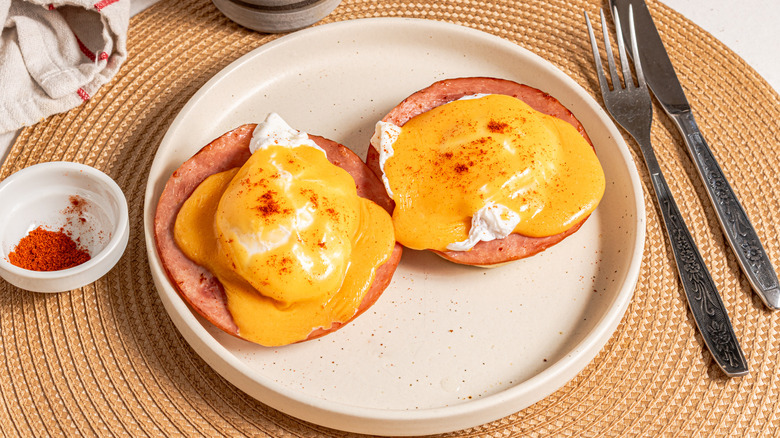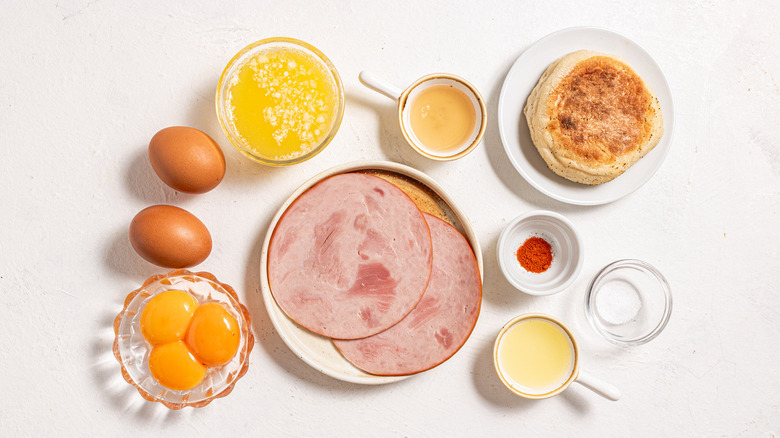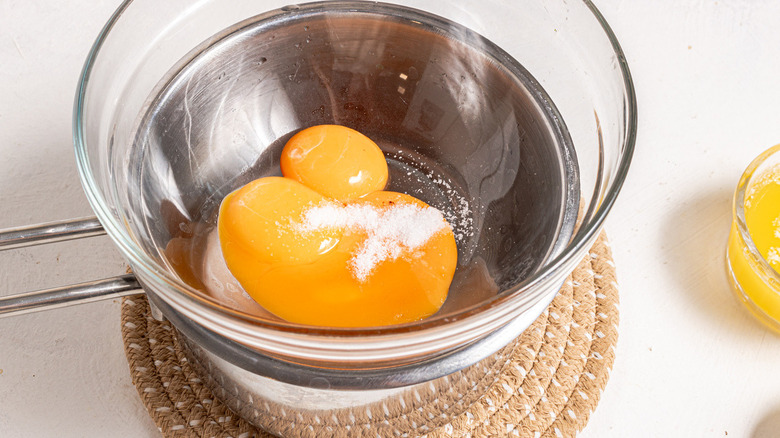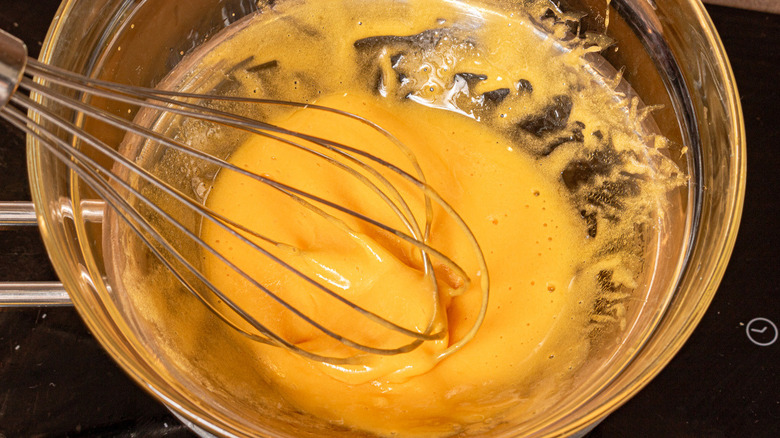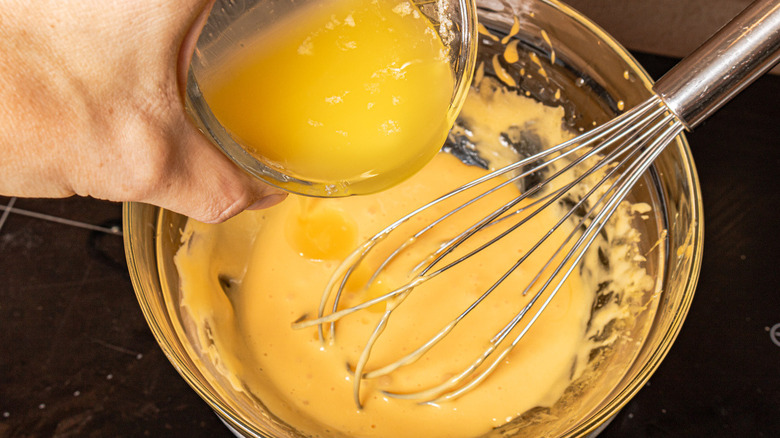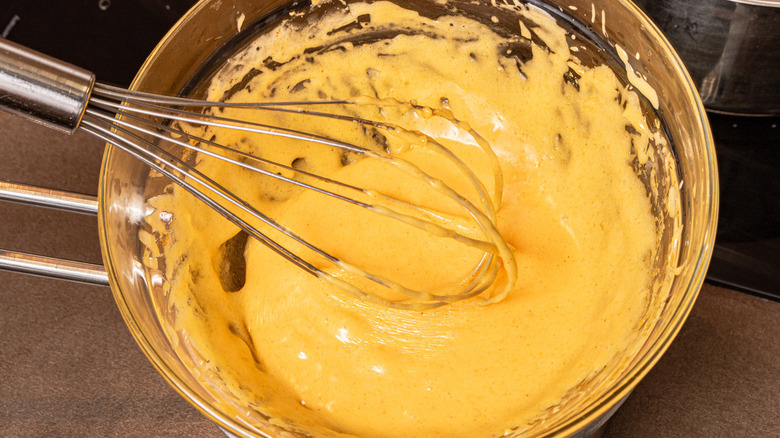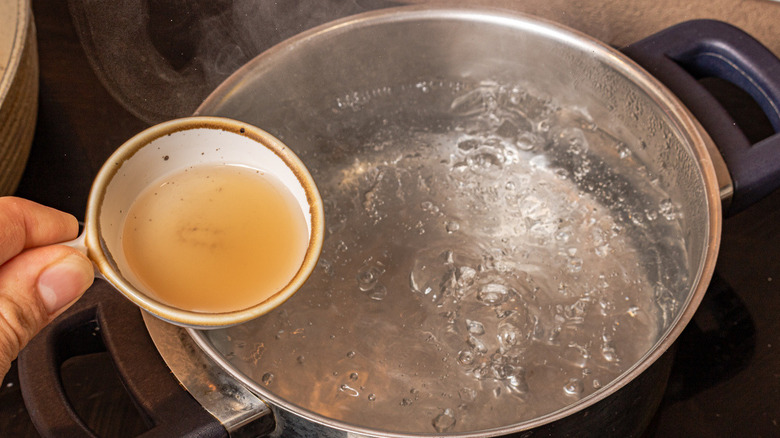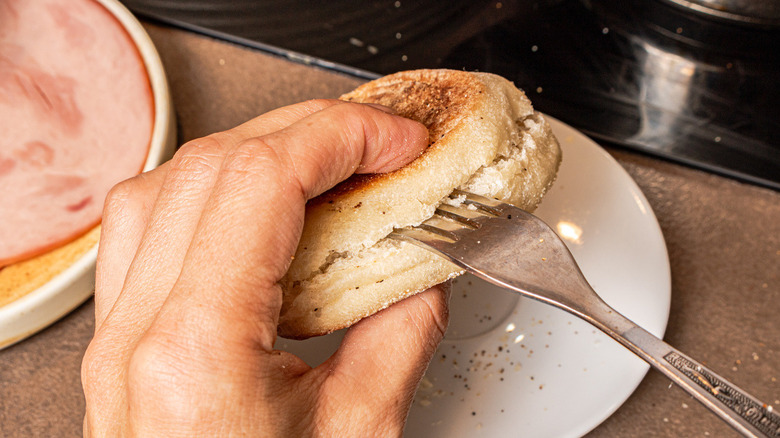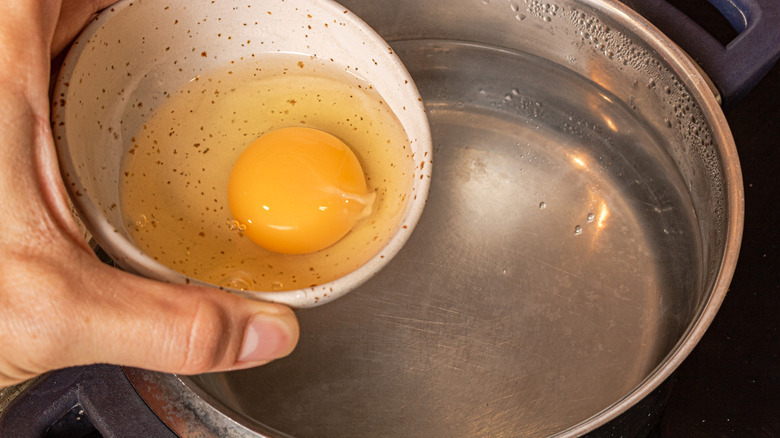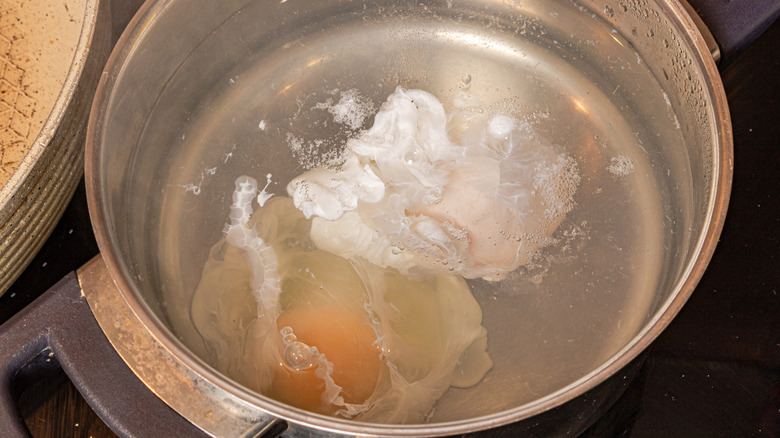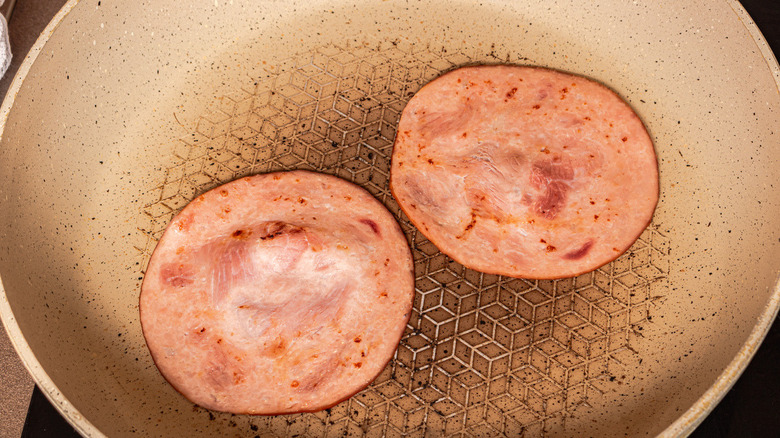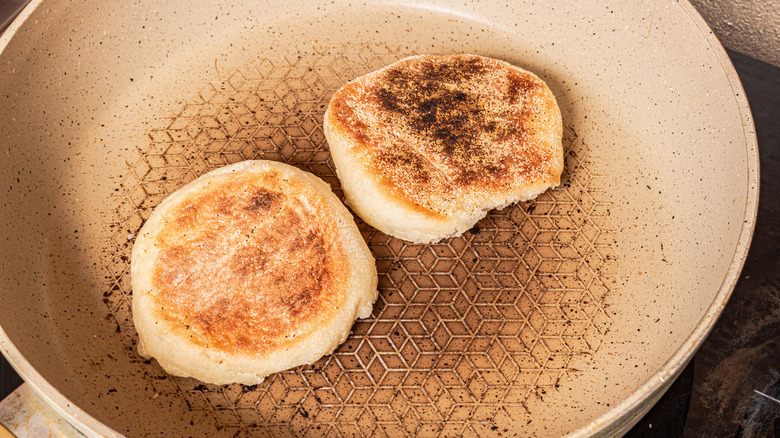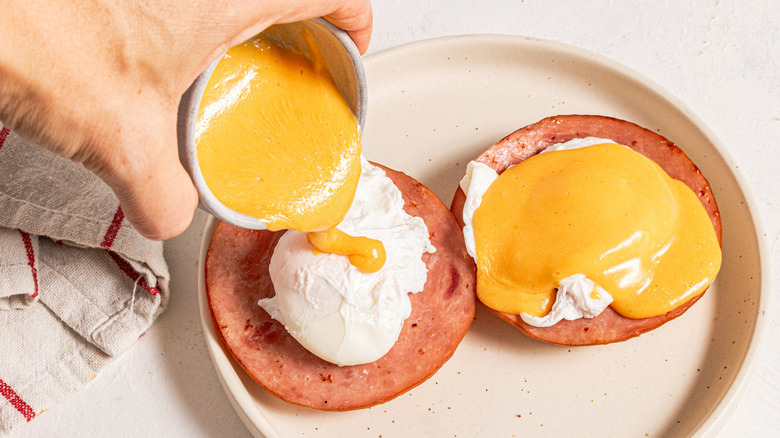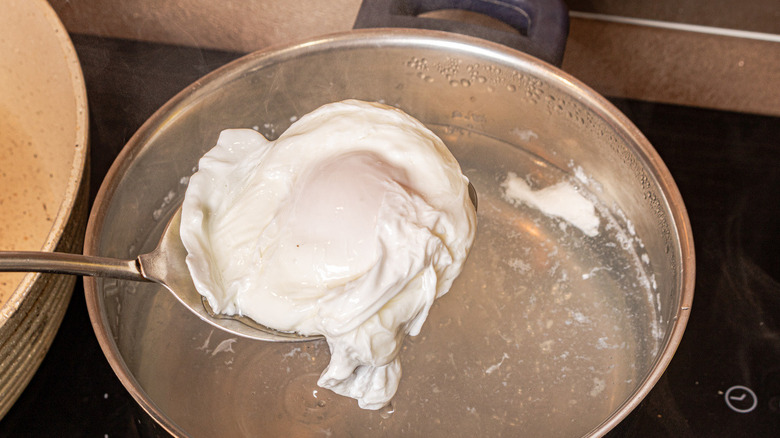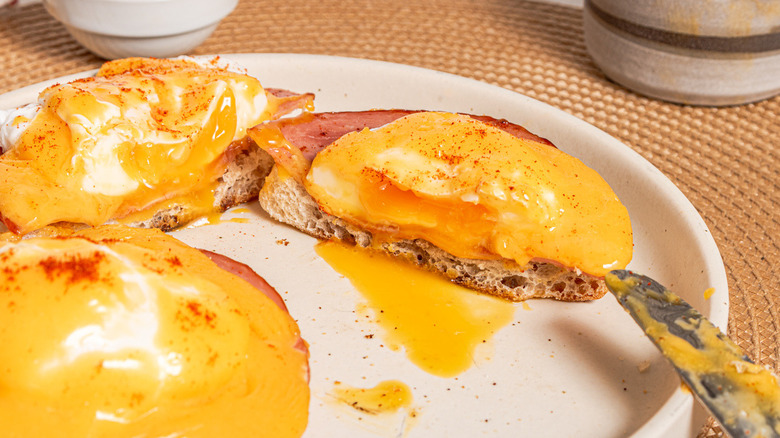Classic, Buttery Eggs Benedict Recipe
We don't know for sure who invented eggs Benedict, since there are several theories surrounding its creation. The two main ones seem to involve a couple of New York restaurants in the 19th century, with some claiming the dish was dreamed up at Delmonico's and others arguing that it was first served at the Waldorf-Astoria. There's even a third theory that the real father of the dish was a banker, yachtsman, and amateur chef by the name of E.C. Benedict, which would explain the name.
Regardless of whoever is ultimately responsible, brunchers everywhere might raise a mimosa in thanks, since the dish has long been a favorite. Numerous variations exist, including Benedicts made with smoked salmon, crab meat, pulled pork, spinach, and artichokes, but recipe developer Milena Manolova likes to stick with the classics. Her eggs Benedict consists of toasty English muffins topped with salty thin-sliced ham and perfectly poached eggs and smothered in smooth, buttery hollandaise sauce.
Collect the classic eggs Benedict ingredients
The base of this dish consists of English muffins, ham, and eggs. You'll need additional egg yolks along with lemon juice, butter, salt, and cayenne for the sauce as well as vinegar to add to the cooking water.
Benedict afficionados might scoff at using ham instead of Canadian bacon in this dish. The two are similar yet distinct ingredients, with the latter being the more traditional choice in this preparation. We happen to like the extra fat content in the ham, which helps when searing the protein prior to assembly to provide a nice contrast in textures. It's also less prone to becoming dry.
Step 1: Beat the egg yolks with salt
In a bowl set over simmering water, add three egg yolks and salt. Whisk until creamy.
Step 2: Stir in the lemon juice
Add lemon juice and whisk for 30 more seconds.
Step 3: Add the butter
While whisking the eggs, slowly pour the melted butter. Whisk until it thickens, about 2-3 minutes.
Step 4: Season the hollandaise sauce
At the end, mix in the salt and cayenne pepper. Set aside, but keep it warm.
Step 5: Heat the water for the poached eggs
Fill a saucepan with at least 2 to 3 inches of water. Bring the water to a boil, add vinegar, and then reduce the heat to simmer.
Step 6: Open the English muffin
Split open the English muffin.
Step 7: Crack the eggs
Crack one egg into a small bowl.
Step 8: Poach the eggs
Slowly place the cracked egg in the simmering water. Repeat with the other egg. Cook for 2-3 minutes, until the whites are opaque. Remove the eggs with a slotted spoon.
Step 9: Fry the ham
While the eggs are cooking, add the ham to a hot skillet and cook over medium heat for about 1 minute on each side, until warm and fragrant.
Step 10: Toast the English muffin
In the same pan where you cooked the ham, add the two pieces of English muffin and toast them on each side for 30 seconds over medium heat.
Build your eggs Benedict
Assemble the eggs Benedict by placing the warm ham over the toasted English muffins, then the poached eggs, and top it off with some of the hollandaise sauce. Garnish with more cayenne pepper if you'd like. Enjoy right away.
Classic, Buttery Eggs Benedict Recipe
We use ham instead of Canadian bacon in our eggs Benedict; we prefer how it crisps up in the pan. What you can't skip is the delicious, silky hollandaise sauce.
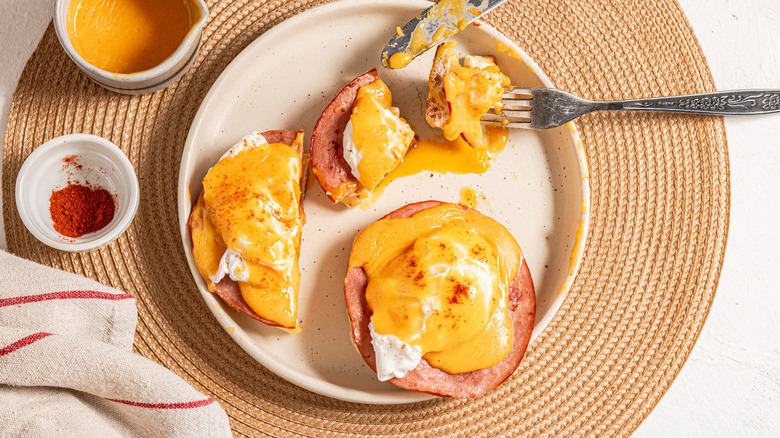
Ingredients
- 2 eggs + 3 egg yolks
- 1 tablespoon lemon juice
- 5 tablespoons butter, melted
- ¼ teaspoon salt
- Pinch of cayenne pepper
- 1 tablespoon vinegar
- 1 English muffin
- 2 slices ham
Directions
- In a bowl set over simmering water, add the three egg yolks and salt. Whisk until creamy.
- Add lemon juice and whisk for 30 more seconds.
- While whisking the eggs, slowly pour the melted butter. Whisk until it thickens, about 2-3 minutes.
- At the end, mix in the salt and cayenne pepper. Set aside, but keep it warm.
- Fill a saucepan with at least 2 to 3 inches of water. Bring the water to a boil, add vinegar, and then reduce the heat to simmer.
- Split open the English muffin.
- Crack one egg into a small bowl.
- Slowly place the cracked egg in the simmering water. Repeat with the other egg. Cook for 2-3 minutes, until the whites are opaque. Remove the eggs with a slotted spoon.
- While the eggs are cooking, add the ham to a hot skillet and cook over medium heat for about 1 minute on each side, until warm and fragrant.
- In the same pan where you cooked the ham, add the two pieces of English muffin and toast them on each side for 30 seconds over medium heat.
- Assemble the eggs Benedict by placing the warm ham over the toasted English muffins, then the poached eggs, and top it off with some of the hollandaise sauce. Garnish with more cayenne pepper if you'd like. Enjoy right away.
Nutrition
| Calories per Serving | 857 |
| Total Fat | 71.9 g |
| Saturated Fat | 39.0 g |
| Trans Fat | 0.0 g |
| Cholesterol | 504.5 mg |
| Total Carbohydrates | 29.4 g |
| Dietary Fiber | 3.4 g |
| Total Sugars | 2.2 g |
| Sodium | 787.5 mg |
| Protein | 25.8 g |
Why do you add vinegar when poaching eggs?
You may wonder why you should add vinegar to the water when making poached eggs. Vinegar is often used because it can help the whites solidify more quickly, which means there will be fewer feathery bits around the edges. Distilled white vinegar works just fine for this purpose, but you can use any other type of vinegar you have on hand. Even though the vinegar doesn't add much flavor to the eggs, you could also replace it with lemon juice if you prefer.
If you're about to start cooking and suddenly realize you're all out of vinegar, will your poached eggs be ruined? No, of course not. In fact, some cooks prefer not to use vinegar for their poached eggs, pointing out that the whites will still cook with or without vinegar in the water. Another way to avoid the feathering issue is by using very fresh eggs, while you can also crack the eggs into a sieve or swirl the water into a vortex before you add them to the pan. Even if you do none of these things, at worst you'll just wind up with slightly frazzled eggs. Any uneven bits can be trimmed away if you're worried about aesthetics — or ignored if you're fine with a more homespun aesthetic.
Can I make eggs Benedict in advance?
While eggs Benedict isn't the best dish for meal prepping, you can poach the eggs ahead of time. Once they've been cooked to your liking, pack them in a resealable plastic container, fill it with cold water, and store them in the refrigerator for up to two days. You can then strain the poached eggs and reheat them in simmering water for about 30 seconds.
Hollandaise sauce, however, is generally best when it's fresh since it relies on a delicate emulsion. It's fine to prepare it up to an hour before you spoon it over the eggs, though, as long as you keep it in a heatproof bowl, wrap this tightly with plastic, and set it in a pan of very hot (but not boiling) water. This way, your sauce will stay warm without continuing to cook. If you find yourself with leftover hollandaise, though, it's better to refrigerate and reheat than to let it go to waste. Warm it up in that same heatproof bowl sitting in a pan of simmering water, but make sure the heat never gets above 140 F since this is the point where the sauce will separate.
